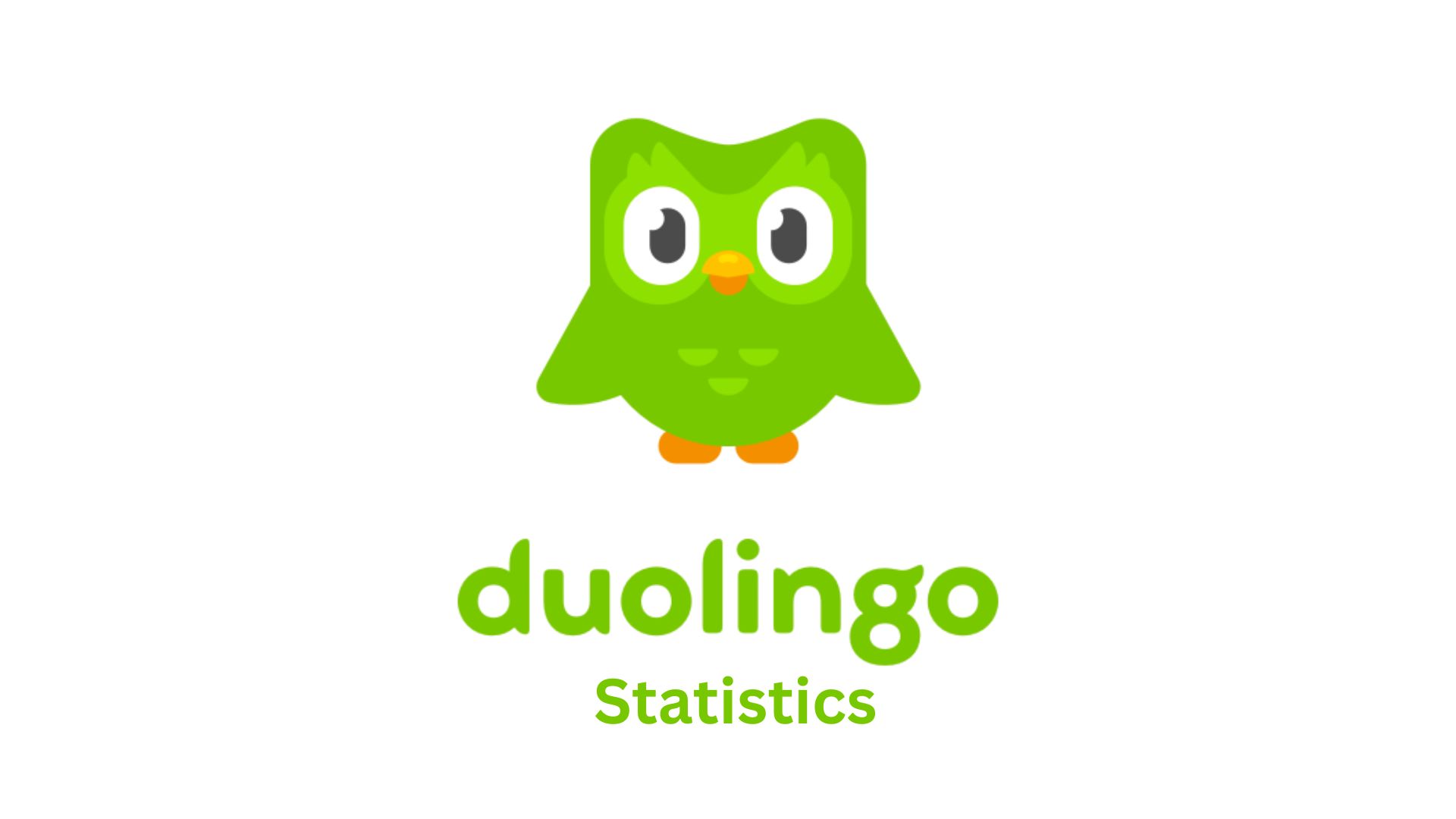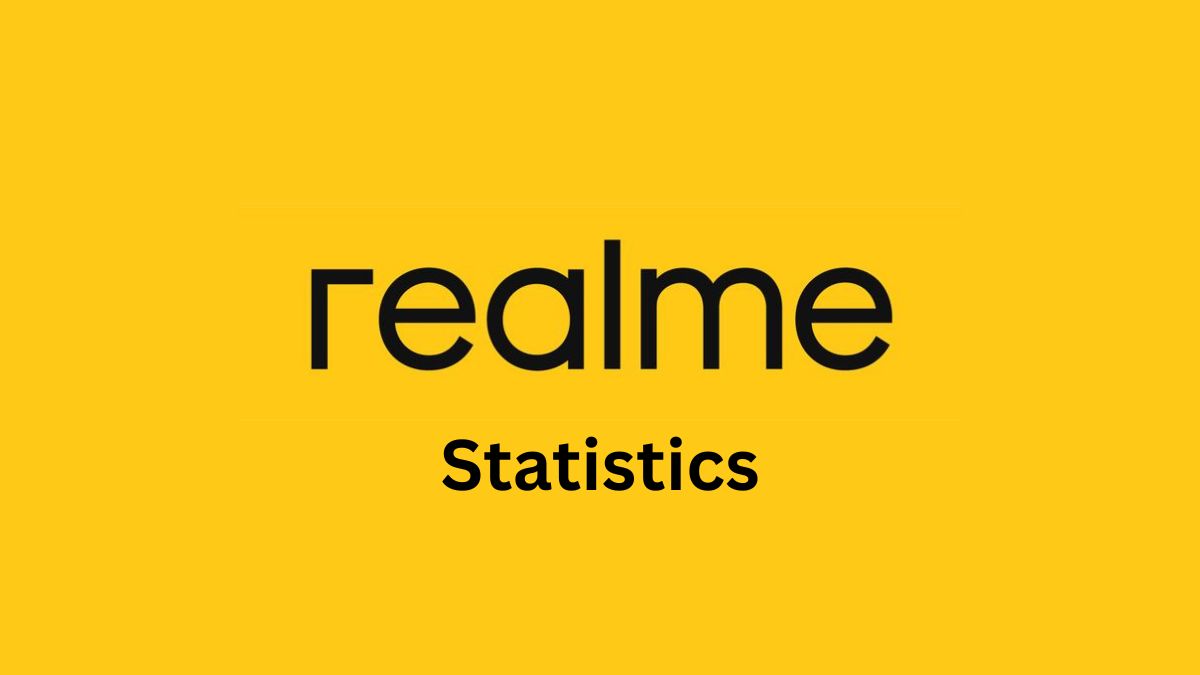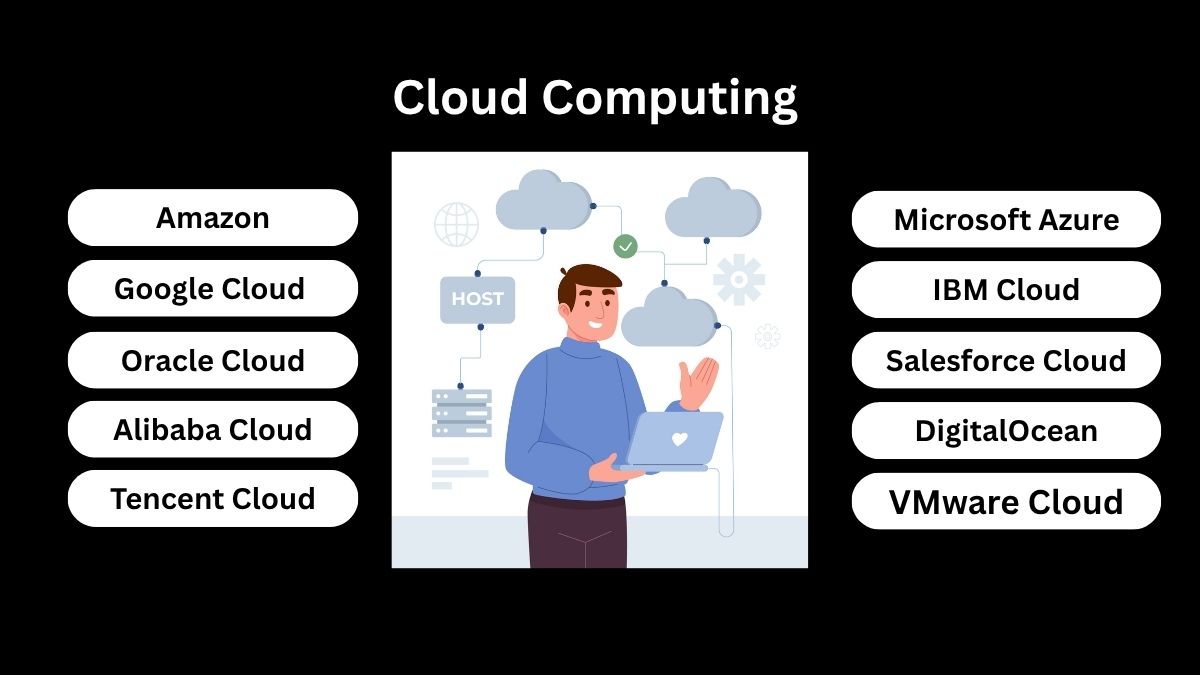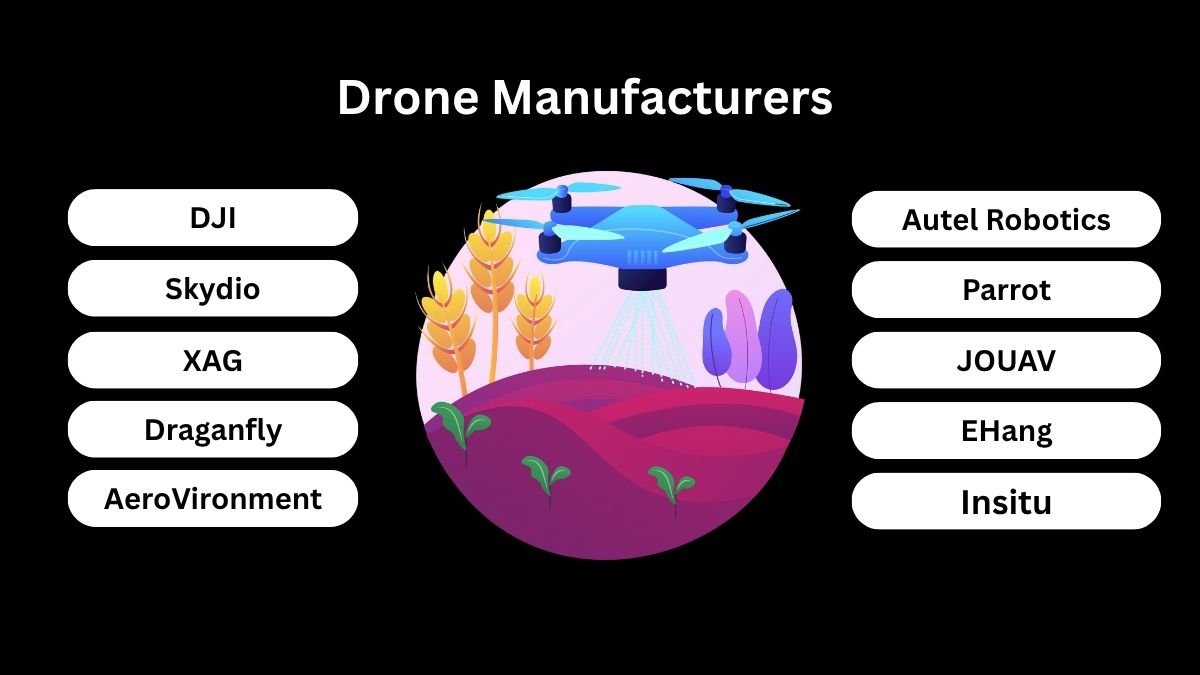Top 10 Mixed Reality Companies in the World
Updated · Oct 15, 2025
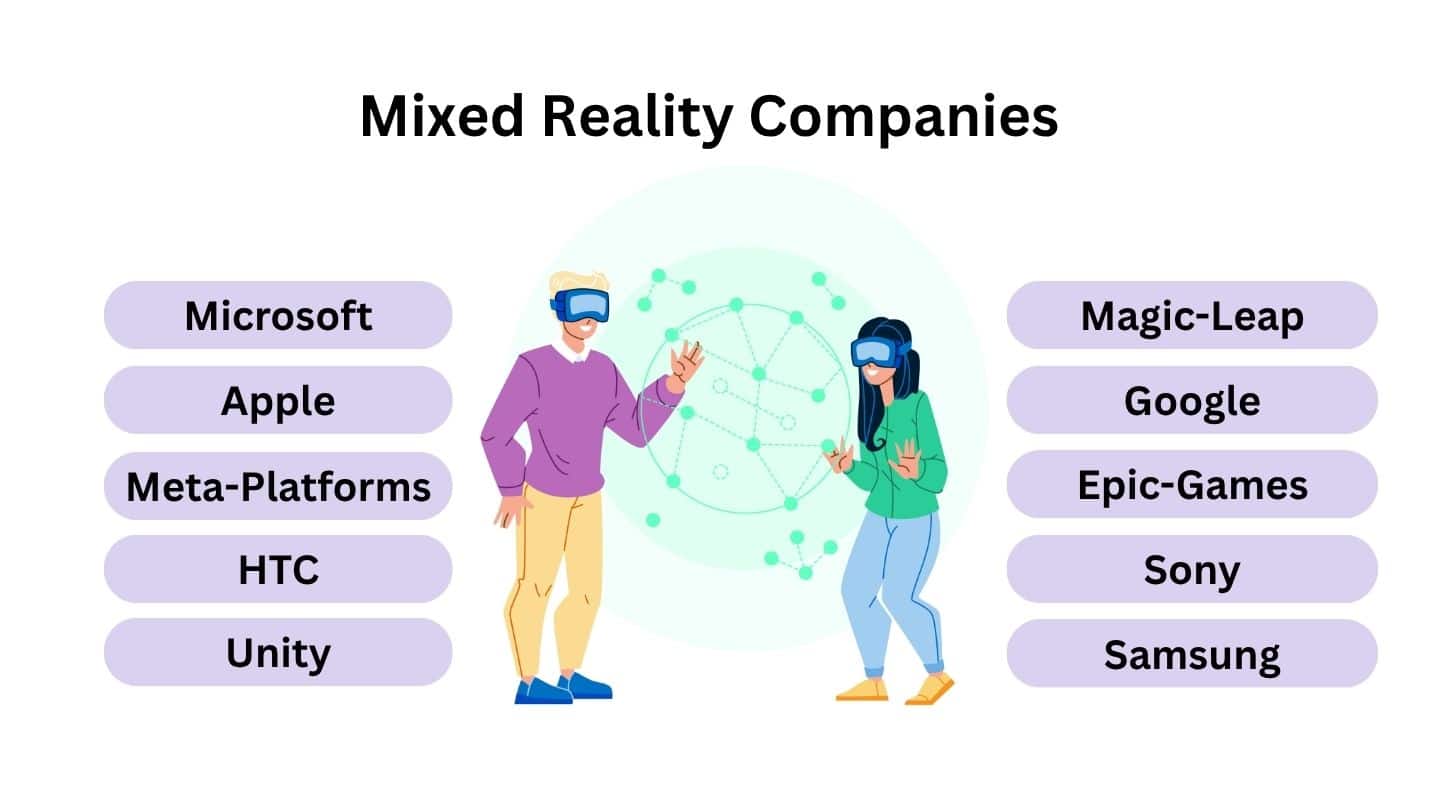
Table of Contents
Introduction
Mixed Reality is a technology that blends the physical world with digital content so both can exist and interact in real time. Unlike virtual reality, which replaces your surroundings, or simple augmented reality, which only overlays graphics, mixed reality anchors 3D objects to real spaces and lets them respond to light, surfaces, and your movements. Using cameras, depth sensors, and spatial mapping, it supports natural inputs such as gaze, hand tracking, and voice. This enables practical uses in design, training, remote help, education, and entertainment, where digital tools feel present and useful inside the real environment for collaborative daily work.
Mixed Reality Market Size
- The global mixed reality market is expected to rise from USD 52.6 billion in 2023 to USD 1,224.0 billion by 2032, growing at a 43.2% CAGR during 2023 to 2032.
- Mixed reality is a technology that blends real and digital elements so users can see and interact with both in one seamless experience.
- Hardware led revenue in 2022, accounting for 78.5% of total market share.
- Adoption spans many fields, including automotive and aerospace, healthcare, entertainment, e commerce, retail, and other enterprise uses, which shows wide and practical value.
- Key companies shaping this market include Microsoft, Magic Leap, Alphabet, and HTC, along with other innovators that continue to advance mixed reality solutions.
Facts About Mixed Reality
- Mixed reality combines augmented reality and virtual reality so people can interact with digital objects that appear in the real world.
- The idea was first named in 1994, and it has advanced as computers, sensors, and displays have become more powerful.
- The technology depends on computer vision, fast graphics, high-quality displays, and cloud services that deliver content and compute support.
- Mixed reality sits between AR and VR, offering semi-digital overlays like AR and fully virtual spaces like VR within one experience.
- The wider extended-reality industry helps show its scale, with the XR market valued at USD 41.2 billion in 2023.
- Projections indicate the XR market could exceed USD 100 billion by 2026, reflecting strong interest across sectors.
- On the consumer side, the AR and VR market was expected to grow 23.5% in 2023 to reach USD 31.1 billion.
- Longer-term views suggest consumer AR and VR could approach USD 50 billion by 2026, showing steady momentum.
- The difference between XR totals and consumer AR and VR reflects enterprise adoption, which is expected to expand as training, simulation, design, and marketing use cases mature.
- New headsets now let users shift easily between AR and VR, which lowers barriers to trying mixed reality.
- Apple announced the Vision Pro in June 2023 at a price of USD 3,499, positioning it mainly for AR while letting users enter more virtual environments with a simple control.
- Meta introduced the Quest 3 in June 2023, adding high-quality passthrough so users can see the real world with digital content layered on top, supporting the mixed-reality spectrum.
- Adoption is likely to grow as devices improve and more business and consumer applications prove value in everyday tasks.
Top Mixed Reality Companies
- Microsoft
- Magic-Leap
- Apple
- Meta-Platforms
- HTC
- Epic-Games
- Unity
- Sony
- Samsung
Microsoft
| Field | Information |
| Company Type | Public corporation, incorporated in the State of Washington; listed on Nasdaq as MSFT. |
| Parent Organization | None. Microsoft Corporation is the ultimate parent of its subsidiaries. |
| CEO | Satya Nadella, Chairman and Chief Executive Officer. |
| Number of Employees | 228,000 worldwide as of June 30, 2025. |
| Established Date and Year | Founded April 4, 1975 by Bill Gates and Paul Allen. |
| Subsidiaries (illustrative) | LinkedIn Corporation; GitHub, Inc.; Activision Blizzard; Double Fine Productions; inXile Entertainment. |
| Products | Windows, Microsoft 365, Azure, Dynamics 365, Teams, Surface devices, Xbox. |
| Headquarters | One Microsoft Way, Redmond, Washington, United States. |
| Geographical Presence | Operates in ~190 countries; global offices and cloud regions across Americas, Europe, Asia, Middle East and Africa. go. |
| Website | https://www.microsoft.com/ |
- Microsoft made Mesh generally available in Teams on January 24, 2024, with availability on the Meta Quest Store from January 25, 2024, enabling 3D immersive meetings within standard Microsoft 365 and Teams licenses.
- Teams provides the primary distribution channel for Microsoft’s immersive meetings, with reported monthly active users at 320–360 million in 2024 to mid-2025, which indicates a large addressable base for Mesh features.
- Microsoft confirmed that HoloLens 2 production has ended, with security updates and support committed through December 31, 2027, while first-generation HoloLens support ended in December 2024.
- Microsoft announced the retirement of Azure Spatial Anchors on November 20, 2024, signaling a shift away from this mixed reality cloud service.
- The U.S. Army’s IVAS program, based originally on HoloLens technology, remained active in FY2025 with a request of USD 255 million to procure 3,162 IVAS 1.2 systems, and a Congressional Research Service brief updated September 11, 2025 confirms continued testing and evolution of the program.
- In February 2025, Anduril was reported to assume development and production leadership for the Army’s IVAS mixed-reality headset program that originated with Microsoft, with Azure positioned as the preferred cloud platform for the effort.
- Microsoft deprecated Dynamics 365 Remote Assist mobile on March 25, 2025, and directed customers to use Microsoft Teams mobile with spatial annotations for comparable mixed reality collaboration workflows.
- In July 2025, industry reporting indicated that Microsoft would retire Mesh apps and the Mesh Toolkit and consolidate capabilities into Teams immersive experiences by December 1, 2025, with Mesh events previously supporting up to 330 attendees and Teams immersive meetings supporting up to 16 participants.
Magic-Leap
| Field | Information |
| Company Type | Private company. |
| Parent organization | Independent corporation; majority owner is Saudi Arabia’s Public Investment Fund. |
| CEO | Ross Rosenberg, appointed October 25, 2023. |
| Number of Employees | ~1,200 worldwide (mid-2025 estimate based on multiple trackers). |
| Established date and year | Founded 2010 by Rony Abovitz. |
| Subsidiaries | Magic Leap Switzerland GmbH; Magic Leap Israel Ltd; acquired units include NorthBit and the 3D division of Dacuda. |
| Products | Magic Leap 2 enterprise AR headset and related optics, platform, and device services. |
| Headquarters | Plantation, Florida, United States; address commonly listed as 7500 W Sunrise Blvd, Plantation, FL. |
| Geographical Presence | Offices across the United States (Plantation, Austin, Boulder, Sunnyvale), plus Zurich and Tel Aviv. |
| Website | https://www.magicleap.com/ |
- Magic Leap 2 provides up to 70° diagonal display field of view with approximately 45° horizontal and 53° vertical coverage, which positions it among the widest see-through enterprise headsets.
- Magic Leap 2 features dynamic dimming optics that vary lens transmission from about 22% down to 0.3% to improve contrast for digital overlays in bright environments.
- The headset weight is reported at about 260 g, which supports extended enterprise use by reducing head-borne load.
- Stated battery life for Magic Leap 2 is up to 3.5 hours of continuous use on the compute pack, aligning with typical shift-based workflows.
- Magic Leap maintains OpenXR support and continues to publish platform updates, including finalized spatial anchors and world-mesh extensions, which indicates active developer ecosystem investment.
- On May 30, 2024, Magic Leap announced a strategic partnership with Google to combine Magic Leap’s optics and device expertise with Google’s platforms for new AR solutions.
- In January 2025, Magic Leap issued OS release 1.12.0 for Magic Leap 2 with updated packages and documented compatibility matrices for Enterprise and MedTech devices.
- Documentation updated on January 23, 2025 reiterates Magic Leap 2’s positioning as an enterprise device with up to 70° diagonal FOV and dynamic dimming, reflecting continued product focus on professional use cases.
- Reporting in August 2024 confirmed that Saudi Arabia’s Public Investment Fund had invested about USD 750 million since 2023 and had become Magic Leap’s majority owner, with additional funding needs noted into 2025.
- Magic Leap 2 distribution and tooling remain active in 2025, with official downloads for OpenXR, Unity, and Unreal development available through the company’s portal.
Apple
| Field | Information |
| Company Type | Public corporation incorporated in California; common stock trades on NASDAQ under ticker AAPL. |
| Parent organization | None. Apple Inc. is the ultimate parent of its subsidiaries. |
| CEO | Tim Cook, Chief Executive Officer. |
| Number of Employees | 164,000 full-time equivalent employees as of September 28, 2024. |
| Established date and year | Founded April 1, 1976; incorporated as Apple Computer, Inc. on January 3, 1977; name changed to Apple Inc. in 2007. |
| Subsidiaries (illustrative) | Beats Electronics LLC; Claris International Inc.; Braeburn Capital, Inc.; Apple Operations International Limited; Apple Distribution International Limited. |
| Products | Hardware and platforms: iPhone, iPad, Mac, Apple Watch, Apple TV, AirPods, Beats, Apple Vision Pro. Operating systems and services: iOS, macOS, watchOS, tvOS, visionOS, App Store, Apple Music, Apple TV+, Apple Arcade, Apple News+, iCloud, Apple Pay, Apple Card. |
| Headquarters | Apple Park, 1 Apple Park Way, Cupertino, California, United States. |
| Geographical Presence | Operates globally; business managed by reportable segments Americas, Europe, Greater China, Japan, Rest of Asia Pacific; Apple retail stores total 535 across 27 countries and regions. |
| Website | https://www.apple.com/ |
- Apple Vision Pro delivers 23 million pixels per eye on its micro-OLED displays, which exceeds the pixel count of a 4K TV for each eye.
- The headset’s listed weight is 600 to 650 g for the device, with a separate battery pack weighing 353 g.
- At launch in February 2024, more than 600 new apps and games were built specifically for Vision Pro, alongside 1 million+ compatible iPhone and iPad apps available on the App Store.
- By August 2024, third-party tracking reported 2,500+ native visionOS apps, in addition to about 1.5 million compatible iPhone and iPad apps.
- Global rollout expanded in mid-2024, with availability beginning June 28, 2024 in China mainland, Hong Kong, Japan, and Singapore, and July 12, 2024 in Australia, Canada, France, Germany, and the U.K.
- In September 2024, Apple released visionOS 2, adding spatial photo creation, new hand gestures, and enhancements to core apps.
- In October 2025, Apple confirmed the first live Apple Immersive sports broadcasts for Vision Pro, with selected Los Angeles Lakers games planned in immersive format accessible via the NBA and Spectrum SportsNet apps.
- Industry reporting in October 2024 indicated that Apple scaled back Vision Pro production and explored a more affordable model, citing component output for 500,000 to 600,000 units.
| Field | Information |
| Company Type | Limited Liability Company incorporated in Delaware; wholly owned subsidiary of Alphabet Inc. |
| Parent organization | Alphabet Inc. |
| CEO | Sundar Pichai, CEO of Google and Alphabet. |
| Number of Employees | 183,323 employees at Alphabet as of December 31, 2024; most roles sit within Google businesses. |
| Established date and year | Founded September 4, 1998; reorganized under Alphabet in 2015. |
| Subsidiaries (illustrative) | YouTube LLC; Google Payment Corp.; Google International LLC. |
| Products | Search, Android, Chrome, Maps, YouTube, Google Cloud, Gmail, Google Workspace, ChromeOS, Pixel, Gemini and others. |
| Headquarters | Googleplex, 1600 Amphitheatre Parkway, Mountain View, California, United States. |
| Geographical Presence | Global operations with offices in nearly 60 countries across North America, Latin America, Europe, Asia-Pacific, Middle East and Africa. |
| Website | https://www.google.com/ and https://about.google/ |
- ARCore is now compatible with approximately 1.4 billion Android devices, which defines a very large addressable base for Google’s AR platform.
- As of May 2025, about 89% of active ARCore devices support the Depth API, which indicates broad hardware readiness for occlusion and scene understanding.
- Google Play Services for AR is automatically installed and updated on supported devices, which streamlines distribution of AR features across the Android ecosystem.
- Google Lens processes 20 billion visual searches every month, which highlights strong user engagement with Google’s visual and spatial search layer relevant to AR use cases.
- Google announced Android XR in December 2024 as a new operating system for headsets and glasses, created in collaboration with Samsung, which formalizes Google’s platform commitment in mixed reality.
- Samsung’s forthcoming Project Moohan mixed reality headset will run on Android XR, which positions Google’s OS at the center of a flagship device launch in October 2025.
- At Google I/O 2025, Xreal Project Aura smart glasses were introduced as the second device family to run Android XR, which expands the hardware pipeline around Google’s XR stack.
- Google and Magic Leap announced a strategic partnership in May 2024 to combine Magic Leap’s optics and device expertise with Google platforms for new AR solutions, which signals deeper re-engagement by Google in head-worn AR.
- Google’s Project Astra multimodal assistant has been shown running on prototype AR glasses and Android phones, which indicates a path to AI-native MR experiences across Google’s ecosystem.
- Google previously wound down certain legacy XR efforts such as Immersive Stream and Stadia-linked services, which reflects a strategic pivot from cloud-rendered XR trials toward an OS-led approach with Android XR.
Meta-Platforms
| Field | Information |
| Company Type | Public corporation, incorporated in Delaware; Class A common stock listed on Nasdaq: META. |
| Parent organization | None. Meta Platforms, Inc. is the ultimate parent of its subsidiaries. |
| CEO | Mark Zuckerberg, Founder, Chairman and Chief Executive Officer. |
| Number of Employees | 74,067 as of December 31, 2024. |
| Established date and year | Founded January 4, 2004; incorporated in Delaware in July 2004. |
| Subsidiaries (illustrative) | Instagram, LLC; WhatsApp LLC; Meta Platforms Ireland Limited; Meta Platforms Technologies, LLC; Siculus, Inc. |
| Products | Facebook, Instagram, Messenger, WhatsApp, Threads, Meta Quest headsets, Ray-Ban Meta AI glasses, and related platforms and services. |
| Headquarters | 1 Meta Way, Menlo Park, California 94025, United States. |
| Geographical Presence | Operations and offices in more than 90 cities across North America, Europe, Middle East, Africa, Asia-Pacific, and Latin America; revenues reported by regions United States and Canada, Europe, Asia-Pacific, Rest of World. |
| Website | https://about.meta.com and https://www.meta.com |
- Meta Quest 3 provides 2064 × 2208 pixels per eye on its color passthrough mixed reality display, which represents a near 30% increase in resolution versus Quest 2.
- Meta confirmed that cumulative Quest sales had reached nearly 20 million units by early 2023, which established a large installed base for new MR titles.
- Meta Reality Labs generated USD 2.1 billion in revenue in 2024 while reporting USD 17.7 billion in operating losses, and cumulative AR and VR investment is on track to exceed USD 100 billion by end-2025.
- IDC reported global AR and VR headset shipments grew about 10% in 2024, which supported Quest ecosystem momentum despite subsequent forecasts for a 2025 pause.
- Meta announced the more affordable Quest 3S at USD 299 for the 128 GB version, positioning it as an entry point to mixed reality with the same core MR capabilities as Quest 3.
- On September 17, 2025, Meta introduced the Ray-Ban Meta Display AI glasses with live captions and translation, and confirmed U.S. retail availability from September 30, 2025.
- A major Quest platform update v81 began rolling out yesterday, adding a redesigned Horizon Home, anchored browser windows, PCVR library integration via Quest Link, and safety and Meta AI improvements.
- On April 22, 2024, Meta opened Meta Horizon OS to third-party device makers including Asus and Lenovo, formalizing an open mixed reality ecosystem strategy.
- Meta announced Quest 3S at Connect 2024 with shipments from October 15, 2024, expanding the mid-tier MR segment alongside Quest 3.
- Meta discontinued Quest Pro in September 2024 and transitioned its lineup toward Quest 3 and Quest 3S, reflecting portfolio consolidation around consumer MR.
HTC Corporation
| Field | Information |
| Company Type | Public company listed on the Taiwan Stock Exchange (TWSE: 2498). |
| Parent organization | Independent public corporation; no parent entity. |
| CEO | Cher Wang, Chairwoman and Chief Executive Officer. |
| Number of Employees | 1,556 as of March 31, 2025. |
| Established date and year | Founded May 15, 1997. |
| Subsidiaries (illustrative) | HTC America Inc.; Viveport Digital Corporation; Viverse Limited (UK/Ireland); DeepQ Technology Corp.; REIGN Technology Corporation; One & Company Design, Inc. |
| Products | VIVE XR/VR headsets such as VIVE XR Elite; VIVEPORT content platform; HTC U23/U24 Pro smartphones and accessories. |
| Headquarters | 88, Section 3, Zhongxing Road, Xindian District, New Taipei City 231, Taiwan. |
| Geographical Presence | Operates worldwide; corporate and operating bases in Taiwan, United States, and China, with global area served. |
| Website | https://www.htc.com/ (corporate and products); https://www.vive.com/ (VIVE). |
- The Vive XR Elite provides a combined resolution of 3840 × 1920 with up to 110° field of view and a 90 Hz refresh rate, supporting 6DoF inside-out tracking for spaces up to 10 × 10 m.
- The Vive XR Elite offers up to 2 hours of continuous power with a detachable, hot-swappable battery, which enables uninterrupted mixed reality sessions.
- The headset is powered by the Qualcomm Snapdragon XR2 platform with 12 GB RAM and 128 GB storage, and it supports Wi-Fi 6/6E connectivity.
- Vive XR Elite includes full-color passthrough via an RGB camera and a depth sensor, which enables mixed reality scene understanding for interaction with physical surroundings.
- The Vive Ultimate Tracker uses dual wide-FOV cameras for inside-out 6DoF body and object tracking and advertises up to 7 hours of battery life, expanding MR input options without base stations.
- HTC’s Vive Focus Vision targets enterprise and high-end gaming with color passthrough, eye tracking, and a per-eye resolution of 2448 × 2448, with software releases documented through June 2025.
- On August 14, 2025, HTC announced the Vive Eagle AI smart glasses weighing 49 g, featuring a 12 MP ultra-wide camera, on-device voice assistant support, and real-time translation in 13 languages, with initial availability in Taiwan.
- On January 24, 2025, HTC VIVE and Virtualware opened an Enterprise Simulation Lab at VIVE Americas Headquarters in Berkeley to demonstrate enterprise mixed reality training and learning use cases.
- In 2025, HTC promoted the availability of Vive Focus Vision with regional bundles and documented ongoing firmware updates, indicating an active lifecycle for the enterprise MR line.
- The Vive XR Elite continues to be marketed for base-station-free PC VR streaming over Wi-Fi or USB-C, which supports mixed reality workflows that require access to desktop content.
Epic Games, Inc.
| Field | Information |
| Company Type | Private company. |
| Parent organization | Independent corporation. No parent entity; privately held with minority investors. |
| CEO | Tim Sweeney, Chief Executive Officer. |
| Number of Employees | Not publicly broken out in filings. Public sources report 4,000+ employees in 2023; Epic also announced ~830 layoffs in September 2023. |
| Established date and year | Founded 1991 in Potomac, Maryland; earlier names included Potomac Computer Systems and Epic MegaGames. |
| Subsidiaries (illustrative) | Psyonix; Tonic Games Group / Mediatonic; Harmonix Music Systems; Capturing Reality; Sketchfab; Quixel; ArtStation. |
| Products | Unreal Engine; Fortnite; Epic Games Store; creation tools such as RealityCapture, Twinmotion, RealityScan. |
| Headquarters | Cary, North Carolina, United States. |
| Geographical Presence | Global operations with dozens of offices worldwide. |
| Website | https://www.epicgames.com/ |
- Unreal Engine 5.6 sets OpenXR 1.1 as the default runtime target for XR projects, which standardizes cross-device mixed reality development.
- Epic’s Fab digital-asset marketplace offers an 88% creator revenue share, which expands access to 3D assets, animations, and materials used in AR, VR, and MR workflows.
- MetaHuman Creator is now integrated directly into Unreal Engine with UE 5.6, and creators are permitted to sell MetaHumans on Fab, which lowers time to content for immersive experiences.
- Epic documents official support for a wide set of XR devices through Unreal Engine, including platforms such as Meta Quest, PlayStation VR2, Apple Vision Pro, HoloLens, and Magic Leap, which indicates broad MR deployment coverage.
- RealityCapture has been made free for individuals and businesses with annual revenue under USD 1 million, which reduces photogrammetry costs for MR scene capture.
- Epic published the Unreal Engine 5.5 and 5.6 release lines with improvements relevant to immersive content creation, including animation, rendering, and virtual production updates that benefit XR pipelines.
- Epic provides an Apple Vision Pro quick-start guide for Unreal, confirming active platform support and noting current constraints such as C++-only projects for the documented workflow.
- Epic maintains Quest development guides for UE 5.4 and 5.5, which indicates continuing first-party documentation for standalone mixed reality headsets.
- Meta released the Meta XR Audio SDK for Unreal with an update dated April 29, 2025, which enables advanced spatial audio features for mixed reality applications built on UE.
- Epic announced RealityScan 2.0 and a rebranded RealityCapture delivery in June 2025, which strengthens end-to-end asset capture for MR scene building.
Unity Software Inc.
| Field | Information |
| Company Type | Public corporation, incorporated in Delaware; common stock listed on NYSE: U. |
| Parent organization | None. Unity Software Inc. is the ultimate parent of its consolidated subsidiaries. |
| CEO | Matthew Bromberg, Chief Executive Officer, effective May 15, 2024. |
| Number of Employees | 4,987 employees as of year-end 2024. |
| Established date and year | Founded 2004 in Copenhagen as Over the Edge Entertainment; reorganized as a Delaware corporation in 2009. |
| Subsidiaries (illustrative) | Unity Technologies SF; Unity Technologies ApS; Unity IPR ApS; Mercer Road Corp; plus ironSource following completion of the merger in Nov 2022. |
| Products | Unity real-time 3D engine and Editor; Unity Cloud services; creation, monetization and growth tools such as Unity Ads, Asset Store, DevOps and multiplayer services. |
| Headquarters | 116 New Montgomery Street, San Francisco, California 94105, United States. |
| Geographical Presence | Global operations with offices across the Americas, Europe, and Asia-Pacific (addresses listed by Unity). |
| Website | https://www.unity.com/ |
- Unity’s OpenXR plug-in is actively maintained, with package updates through v1.15.x and a v1.16.0-pre.1 preview that aligns with OpenXR 1.1 features, which standardizes cross-device MR development.
- Android XR support in Unity became “fully verified” with Unity 6.2 in September 2025, which strengthens production readiness for Android-based MR headsets.
- Unity provides official visionOS support via PolySpatial, available to Unity Pro, Enterprise, and Industry subscribers, which enables creation of spatial apps for Apple Vision Pro.
- Unity’s PolySpatial visionOS packages continued to ship through 2025 with iterative updates, including a 2.2.x line dated March 2025 and subsequent 2.3.x releases that expanded lighting and rendering capabilities.
- Microsoft confirmed that building new HoloLens 2 apps requires sticking to specific Unity editor and OpenXR plug-in versions, since Unity releases after June 23, 2025 no longer include new HoloLens 2 support, which affects MR project planning.
- Unity announced official support for visionOS 2 on October 17, 2024, and released additional visionOS updates throughout 2025, which sustained first-party compatibility for Apple’s MR platform.
- Unity rolled out Unity AI in Unity 6.2 during August 2025, consolidating and superseding Muse and Sentis to accelerate content creation for MR workflows inside the Editor.
- Unity’s XR engineering posts documented ongoing feature additions in April 2025 and September 2025, which included platform verifications and tooling improvements for XR developers.
- Unity’s documentation confirms maintained OpenXR device pathways for Meta Quest within the Unity OpenXR plug-in, which supports deployment to leading consumer MR headsets.
Sony Group Corporation
| Field | Information |
| Company Type | Public corporation incorporated in Japan; listed on the Tokyo Stock Exchange (Ticker: 6758) and included in Nikkei 225 and TOPIX Core30. |
| Parent organization | None. Sony Group Corporation is the ultimate parent of its consolidated subsidiaries. |
| CEO | Hiroki Totoki, President and Chief Executive Officer, effective April 1, 2025. |
| Number of Employees | 112,300 employees (as of March 31, 2025). |
| Established date and year | Founded May 7, 1946 in Tokyo by Masaru Ibuka and Akio Morita. |
| Subsidiaries (illustrative) | Sony Interactive Entertainment, Sony Pictures Entertainment Inc., Sony Music Group, Sony Semiconductor Solutions, Sony Financial Group Inc. |
| Products | Consumer and professional electronics, PlayStation gaming, imaging and sensing (CMOS image sensors), music and pictures entertainment, and financial services. |
| Headquarters | Sony City, 1-7-1 Konan, Minato-ku, Tokyo 108-0075, Japan. |
| Geographical Presence | Worldwide operations; corporate sites and business units across the Americas, Europe, and Asia-Pacific with global area served. |
| Website | https://sony.com/en/ |
- PlayStation VR2 uses OLED panels at 2000 × 2040 per eye, supports 90 Hz and 120 Hz refresh rates, and offers an approximate 110° field of view.
- Sony announced an immersive spatial content creation system featuring an XR head-mounted display with 4K OLED microdisplays and video see-through for professional 3D workflows.
- The XR head-mounted display identified as SRH-S1 features a 4K micro-OLED panel, video see-through, and the Snapdragon XR2+ Gen 2 platform.
- The PS VR2 PC adapter enables access to SteamVR content starting August 7, 2024, which broadens the playable catalog for the headset.
- On January 7, 2025, Siemens and Sony announced an immersive engineering collaboration that integrates Siemens’ NX software with Sony’s XR headset to advance the industrial metaverse.
- In January 2025, Siemens described NX Immersive Designer as combining Siemens expertise with Sony technology for spatial design workflows, confirming continued enterprise MR focus.
- In 2024, Sony confirmed development of its spatial content creation system with 4K OLED microdisplays and video see-through, reinforcing a creator-centric MR strategy.
- In 2024, Sony detailed official PS VR2 specifications that include 2000 × 2040 per eye resolution and 110° FOV, which position the device for high-fidelity MR and VR experiences.
Samsung Electronics Co., Ltd
| Field | Information |
| Company Type | Public company incorporated in South Korea; listed on Korea Exchange KRX: 005930/005935. |
| Parent organization | Samsung Group. |
| CEO | Young-Hyun Jun (also styled Jun Young-hyun), Vice Chairman & CEO. |
| Number of Employees | ~270,000 worldwide; Wikipedia reports 270,372 for 2023. Samsung’s country list provides headcounts by country at the end of 2024. |
| Established date and year | January 13, 1969. |
| Subsidiaries (illustrative) | Samsung Display; Harman International; Samsung Electronics America; Samsung Medison; SmartThings. |
| Products | Semiconductors and foundry, smartphones (Galaxy), TVs and displays, home appliances, network equipment, and related software and services. |
| Headquarters | 129, Samsung-ro, Yeongtong-gu, Suwon-si, Gyeonggi-do 16677, Republic of Korea. |
| Geographical Presence | Global operations and locations across the Americas, Europe, Middle East and Africa, and Asia-Pacific; Samsung Semiconductor lists offices in the US, Europe, India, Korea, China, Japan, and Southeast and Southwest Asia. |
| Website | https://www.samsung.com/ |
- Samsung’s prior Windows Mixed Reality headset, the HMD Odyssey+, delivered 1440 × 1600 per eye resolution at up to 90 Hz with an approximate 110° field of view.
- Samsung Display completed the acquisition of eMagin on June 10, 2024, adding OLED-on-silicon microdisplay capability that is widely used in XR devices.
- Qualcomm announced the Snapdragon XR2+ Gen 2 platform on January 4, 2024, indicating it would power Samsung’s forthcoming Google-powered XR device.
- Samsung Display showcased advanced micro-OLED for next-generation headsets in May 2025, underscoring the company’s vertically integrated XR component strategy.
- Samsung confirmed a Galaxy event on October 21, 2025, to unveil its Android XR headset, widely referred to as Project Moohan, and opened reservations ahead of launch.
- Multiple reports in October 2025 describe Project Moohan as running Android XR with Samsung’s One UI XR, and suggest hardware such as 4K micro-OLED panels around 4032 ppi, Snapdragon XR2+ Gen 2, and support for hand, eye, and voice input.
- Google officially announced Android XR on December 12, 2024, in partnership with Samsung and Qualcomm, positioning Gemini-powered services for headsets and, later, glasses.
- Samsung’s own messaging highlights Android XR as part of a broader Galaxy AI effort for spatial computing, confirming tight alignment between Samsung hardware and Google’s XR stack.
Sources

Joseph D'Souza founded ElectroIQ in 2010 as a personal project to share his insights and experiences with tech gadgets. Over time, it has grown into a well-regarded tech blog, known for its in-depth technology trends, smartphone reviews and app-related statistics.





